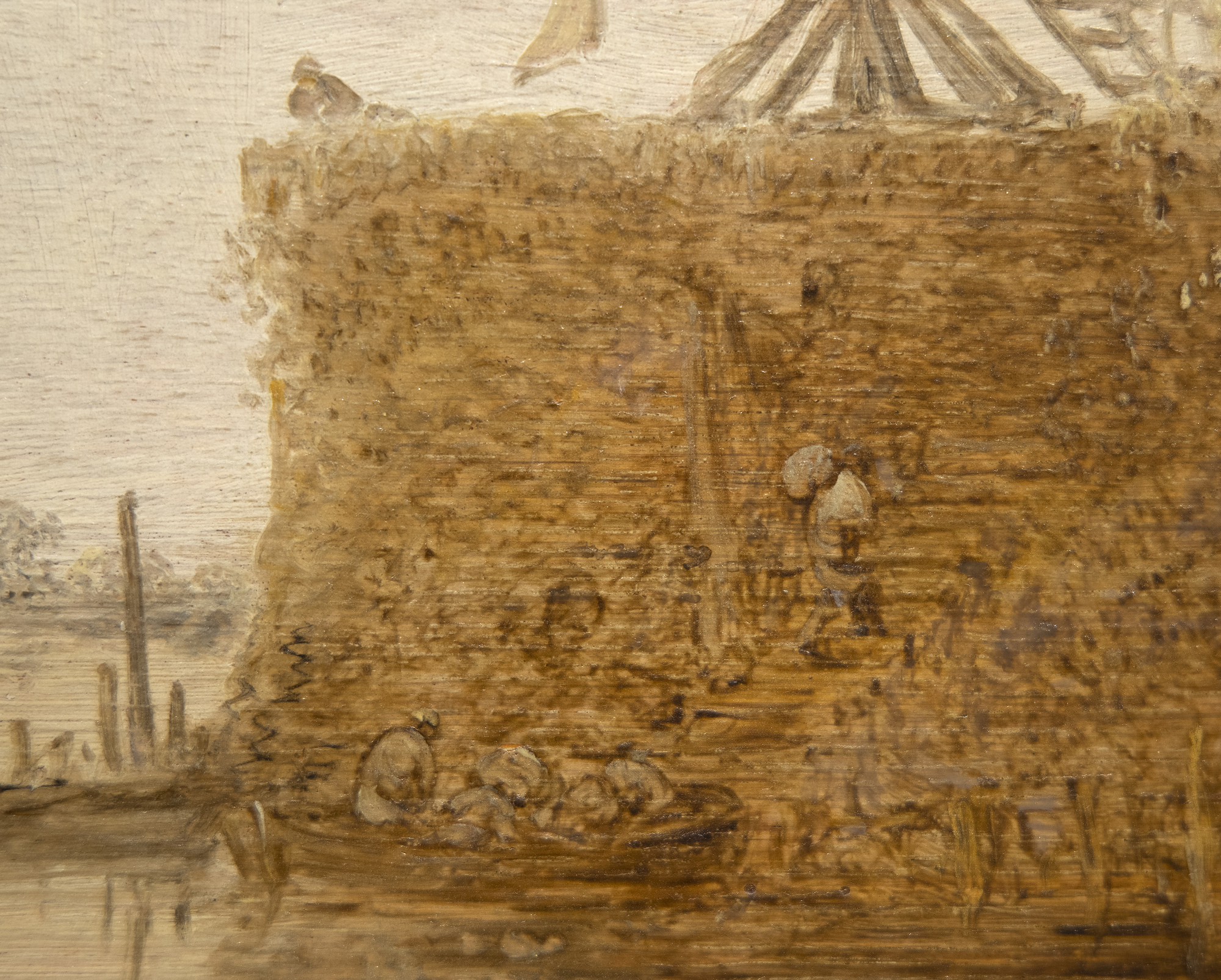JAN JOSEPHSZOON VAN GOYEN (1596-1656)










Provenance
Victor Phaland, Wesel, GermanyHis Sale: Frederik Muller & Co., Amsterdam, April 24, 1906, no. 76, illus., as with traces of a signature
Gaston Neumans, 1906
F. Hartman, Norway
Sale: Sotheby's New York, June 5, 1986, Old Masters Paintings, sale 5471, lot 0051
Private Collection, New York
Private Collection, California, by descent
Literature
G. Hofstede de Groot, Catalogue Raisonne of the Works of the most Eminent Dutch Painters, 1927, Vol. VIII, p. 234, no. 947 (as with traces of a signature)H. Volhard, Die Grund...More...typen der Landschagtsbilder Jan van Goyens, 1927, doctoral dissertation, pp. 120 & 179
Hans-Ulrich Beck, Jan van Goyen, 1973, Vol. II, p. 329, no. 724, illus.
...LESS...
History
Jan van Goyen came of age at a most propitious time. Born in 1596 and several generations after the Protestant Reformation that created a market for secularized art, he prospered as an artist specializing in the landscape. He would achieve great fame, his paintings synonymous with collectability and status. Indeed, mid-and-late seventeenth-century inventories of Dutch Republic households reveal that Van Goyen was represented in their collections more often than any other artist of the time; his paintings prized by people with neither great wealth nor exceptional connoisseurship as well as those who owned uncommonly fine paintings by Rembrandt, Hals, or Dou. Van Goyen is a key figure in the emergence of modern art commerce. But more importantly, he was a trendsetter who established a new aesthetic that dominated much of Dutch and Flemish landscape painting during much of the century labeled, ‘The Golden Age.’
This new aesthetic, a sober, sepia-toned palette bound by an underlying ochre ground is the stylistic mannerism for which Van Goyen’s is most known. He continued to accept commissions in the colorful manner of his earlier work in the manner of his teacher, Esaias van de Velde but the atmospheric, honeyed impression of River Landscape with a Windmill and Chapel is emblematic of his mature style. The style was employed by many artists of his generation (including still life and genre painters), but Van Goyen applied this palette and technique in the extreme throughout the 1630s and 1640s. It is a tack that facilitated rapid wet-on-wet application of paint that could accelerate the pace of production, address the demands of a burgeoning market, and reduce material costs. Yet whatever economic motivation that prompted Van Goyen to adopt the technique, no artist of the time displayed more virtuosity with a loaded brush or achieved more fame because of it. As Samuel van Joogstraeten related in his 1678 treatise on the art of painting, during a competition held around 1630, three landscapists were challenged to create a painting in a single day, and it was Van Goyen who displayed an effortless ability to conjure up a range of motifs out of nothing. ‘By “swaddling” the whole panel all at once — here light, there dark, more or less like a multicolor agate, or marbled paper — he (Van Goyen) was able, with barely any effort, to apply with tiny brushstrokes all manner of drolleries, so that over yonder a distant view looms up with peasant hamlets, while elsewhere appears an old fort with a gate and landing stage reflected in the rippling water, as well as various kinds of ships and barges, loaded with passengers and freight. In short, his eye — as though in search of the forms that lay hidden in the chaos of his painting — skillfully guided his hand, so that one saw a perfect painting.’ (Judikje Kiers, The Golden Age of Dutch Art, pg. 133)
MoreTop Results at Auction

“A Village on the Banks of a River with a Ferryboat and Peasants Outside an Inn” sold for $2,066,405.

“An Estuary Scene with Small Vessels in Light Airs, and a Distant view of Woudrichem” (1650-1655) sold for $1,571,553.








































